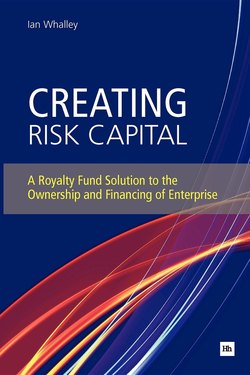Читать книгу Creating Risk Capital - Ian Whalley - Страница 10
ОглавлениеBackground
I first became interested in enterprise and risk capital when I was training to be an accountant. To a youthful mind, these terms conjured up a romantic image of merchant venturers crossing the globe and pioneers of new technology, all opening up frontiers in their various ways.
It was clear then, back in the 1960s, that most able and ambitious people have always needed risk capital to finance their projects, just as Columbus did for his voyages of discovery over five centuries ago. Risk capital remains central to the financing of new ventures and projects. It supports the companies of the day and helps to create the companies of the future. In short, it is one of the keys to a dynamic and prosperous society.
Yet, at that time, in the 1960s, it was almost impossible to find risk capital in Britain. There were a number of stock explanations for this situation, including one to the effect that penal taxation discouraged risk-taking and enterprise. None of these explanations, however, seemed wholly convincing in a country which had led merchant enterprise overseas since Elizabethan times, and where the Industrial Revolution had paved the way for investments in countless projects in trade and industry all over the world. British capital had financed pioneer enterprises – from plantations and mines to ports and railways – in Europe and the Americas, Africa, Australia and Asia, in the nineteenth century. In the twentieth century, a firm of London investment bankers, O.T. Falk & Partners, had backed the young jet pioneer Frank Whittle. [1]
So it was that my interest led me to a merchant bank in London, but this was a period when risk capital was widely considered in the City as less than respectable, and even as, in the language of the time, ‘a bit spivvy’. So while the bank concentrated more on project and corporate financing, I went to its office in the USA, where I observed the provision of substantial amounts of risk capital, focused on a small number of new technology high-growth businesses, which was fast becoming the industry known as venture capital.
When I returned to Britain, however, there was still little in the way of a risk capital community, other than organisations created or encouraged by the government to fill a number of perceived financing gaps, such as in overseas development, the small business sector, exports, films and new technology. The last of these seemed to present particular challenges, so I moved accordingly to the National Research Development Corporation (NRDC).
National Research Development Corporation
NRDC financed many private sector development projects and ventures alongside its mainstream business of licensing to industry the intellectual property generated in universities and research establishments. These projects presented all sorts of risks and challenges – management, technical, commercial and, not least, financial.
NRDC operated in practice more or less autonomously in this demanding environment. It was expected to adopt business disciplines in order to make ends meet and to finance its own operations. This it did successfully, consistently reporting substantial profits until it was privatised as the core of British Technology Group, which became a quoted company.
While it was in the public sector, NRDC did not generally find it appropriate to adopt the normal business approach of seeking an ownership share of companies in exchange for the risk capital provided. Yet it had to use business and financing methods which brought sufficient reward to justify the risks involved. Accordingly, it adopted an alternative method of financing, akin to its main licensing activity, which took the form of a contribution to the costs of the development effort in exchange for levies on the sales which resulted.
It soon became clear that the method used by NRDC was attractive to its clients, not only because it was a rare source of risk capital for their projects, but also, importantly, because it allowed them to maintain their independence: it did not involve any dilution of ownership or control, nor any borrowing. In effect, NRDC had adopted a method that enabled companies and entrepreneurs to hire risk capital and reward it fairly, without incurring any debt. And it seemed likely that if this method could be made fully commercial, it could have many applications beyond the financing of new technology projects.
Endnote
1 John Golley, Genesis of the Jet: Frank Whittle and the Invention of the Jet Engine (Airlife Publishing, 1996), pp. 67-69. [return to text]
